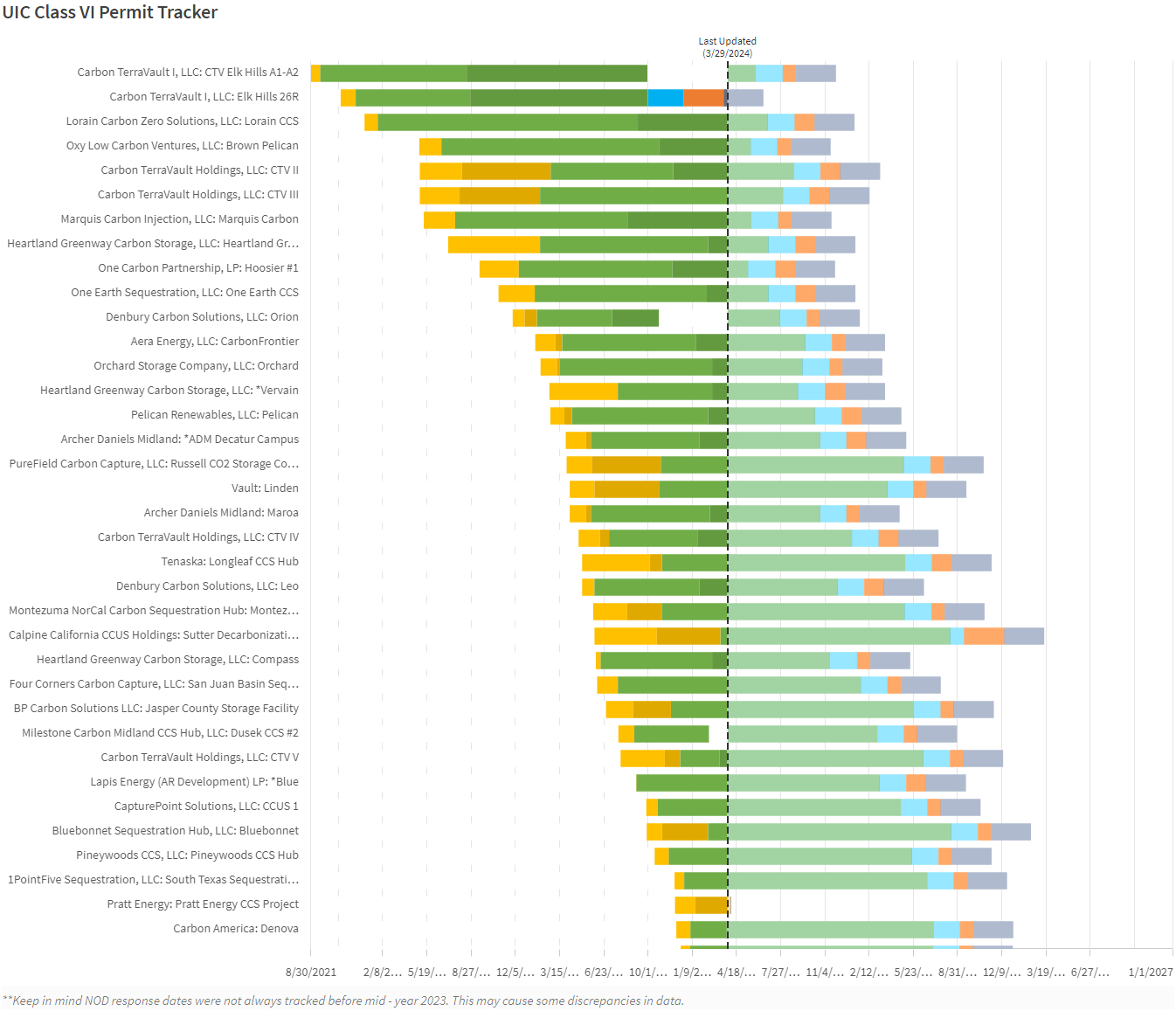After three years of delays in issuing Class VI well permits due to a backlog of applications submitted to the Environmental Protection Agency (EPA), carbon capture and sequestration (CCS) project approval is now seeing an uptick nationwide. The reason? More states being granted primacy as a way to shift regulatory control of Class VI wells to the statewide level, rather than relying on the timelines and restrictions of the federal approval process.
This recent boost in Class VI well permits and project operations across the country proves that utilizing these types of injection wells for CCS continues to be a profitable and valuable venture in the oil and gas industry. As more states apply for primacy, the number of Class VI well permit approvals is bound to continue increasing.
What Are Class VI Wells?
The EPA oversees the development of requirements for CO2 storage project approval via the Underground Injection Control (UIC) program, which ensures the protection and maintenance of public health standards such as keeping underground drinking water sources safe and uncontaminated during drilling operations. The UIC program classifies six types of injection wells “based on the type and depth of injection activity,” and its potential environmental risks.
Class VI wells are specifically used for the geologic sequestration of CO2, which provides long-term underground CO2 storage potentially lasting thousands of years. These man-made CO2 sequestrations emulate natural pockets of carbon dioxide that already exist underground.
The Class VI Well Permitting Process and Primacy

Source: https://www.epa.gov/uic/class-vi-wells-used-geologic-sequestration-carbon-dioxide
In order to be approved for primacy (primary enforcement responsibility), US states, territories, or tribes interested in undertaking Class VI well projects are required to submit an application to the EPA proving they are able to meet and self-regulate environmental standards for these projects according to UIC program requirements.
Without primacy, an individual permit application must be submitted to the EPA for each proposed Class VI well, and it can take up to two years or longer for approval. With primacy, Class VI well permits can be issued at the state level rather than federal, meaning quicker approval processes, project timelines, and higher amounts of project approvals likely overall.
The Current State of Primacy
As of March 2024, there are 43 projects and 128 Class VI wells currently under review nationwide for permitting with the EPA. Over 30 of these wells are in Texas alone. Meanwhile, three states have been granted primacy: Louisiana, North Dakota, and Wyoming, with Texas’ application also currently under review.

Source: https://www.epa.gov/uic/current-class-vi-projects-under-review-epa
Since being granted primacy, these states have issued over 20 Class VI well permits; Louisiana issuing 13 just since December 2023. The sudden increase in permits following primacy proves the urgency and interest in utilizing these wells to create long-lasting, sustainable carbon storage sources, as well as frustration with long wait-times with the EPA encouraging states to seek more authority over the Class VI projects taking place on their territory.
Panther and Class VI Well Management
As more states are approved for primacy, more significant upsurges of Class VI well projects are to be expected. At Panther Fluids, we’re prepared to help streamline drilling operations even further with our high-quality solids control, haul off and disposal services, and total drilling fluids management systems.
Our experience working on 160 wells in East Texas and nearly 30 in Louisiana gives us the proven expertise in managing drilling projects involving any well type within these current CCS hotspots. With over 200 years of combined experience in the oil and gas field, trust The Panther Companies to help lead your Class VI well to sustainable success.

